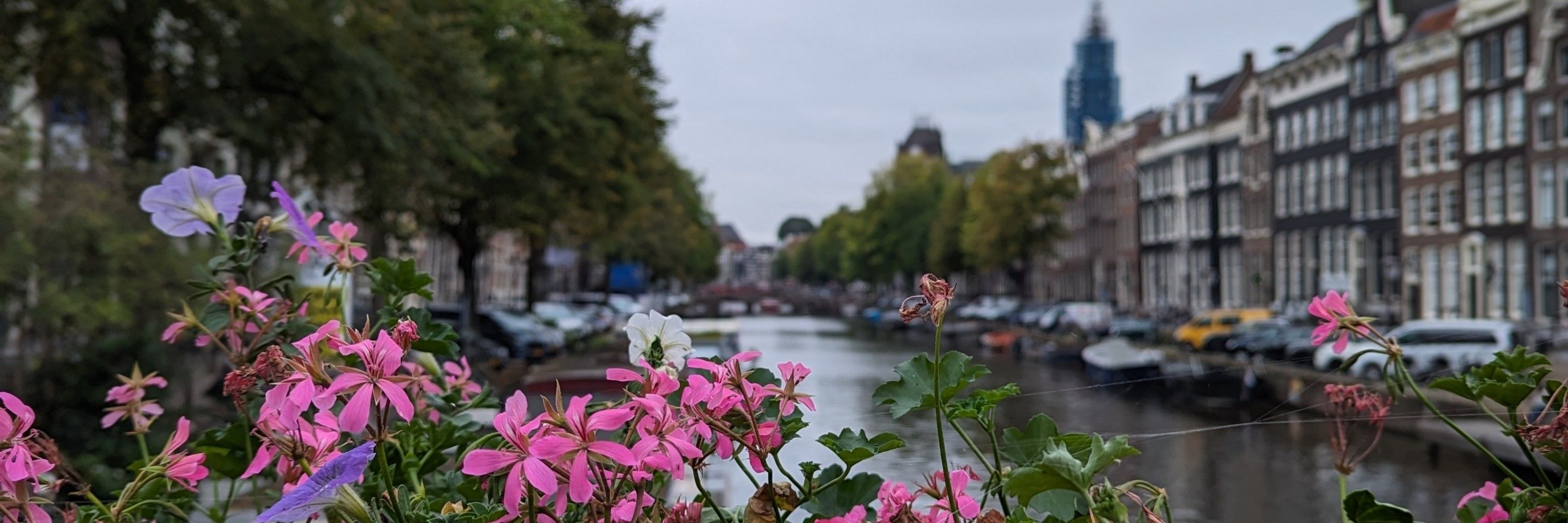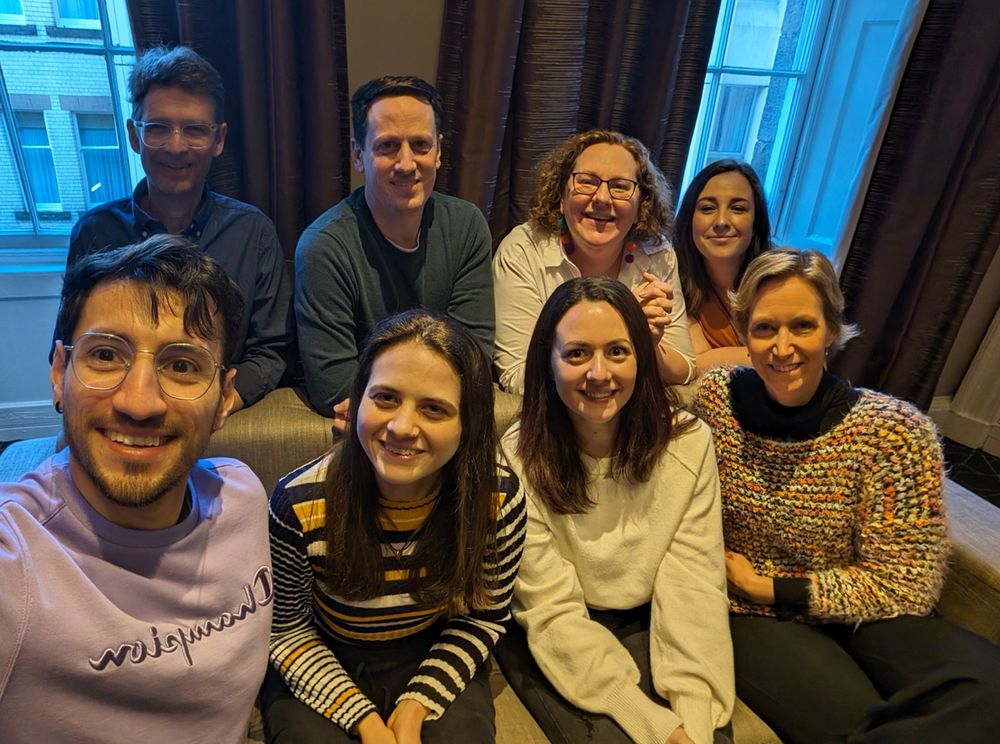
Themis Efthimiou
@themisefth.bsky.social
Quantitative Researcher | Psychology PhD | R & Python
Finally a huge thanks to my coauthors, Stephanie Lewis, Charlotte Wilks, Lorena Jiménez-Sánchez, Robert Ackerman, @michelleldodd.bsky.social , Sarah Foster, @noahsasson.bsky.social , @suereviews.bsky.social, Daniel Ropar,
@cjcrompton.bsky.social.
@cjcrompton.bsky.social.
August 29, 2025 at 10:29 PM
Finally a huge thanks to my coauthors, Stephanie Lewis, Charlotte Wilks, Lorena Jiménez-Sánchez, Robert Ackerman, @michelleldodd.bsky.social , Sarah Foster, @noahsasson.bsky.social , @suereviews.bsky.social, Daniel Ropar,
@cjcrompton.bsky.social.
@cjcrompton.bsky.social.
While autistic people had longer talking turns, this didn't explain the rapport gap. Our findings challenge a purely deficit-based view of autistic communication.
August 29, 2025 at 10:29 PM
While autistic people had longer talking turns, this didn't explain the rapport gap. Our findings challenge a purely deficit-based view of autistic communication.
The context mattered most. Autistic participants reported the highest rapport when they knew their partner was also autistic, supporting the idea of a distinct autistic social style that thrives between autistic people. #DoubleEmpathyProblem
August 29, 2025 at 10:29 PM
The context mattered most. Autistic participants reported the highest rapport when they knew their partner was also autistic, supporting the idea of a distinct autistic social style that thrives between autistic people. #DoubleEmpathyProblem
Reposted by Themis Efthimiou
This has been a long piece of work – the stage 1 registered report was submitted in 2021!
Its been a team effort with @noahsasson.bsky.social @suereviews.bsky.social @sarah-foster.bsky.social @themisefth.bsky.social @michelleldodd.bsky.social, Martin Lages, Charlotte Wilks + Dani Ropar. #DreamTeam
Its been a team effort with @noahsasson.bsky.social @suereviews.bsky.social @sarah-foster.bsky.social @themisefth.bsky.social @michelleldodd.bsky.social, Martin Lages, Charlotte Wilks + Dani Ropar. #DreamTeam

May 14, 2025 at 2:34 PM
This has been a long piece of work – the stage 1 registered report was submitted in 2021!
Its been a team effort with @noahsasson.bsky.social @suereviews.bsky.social @sarah-foster.bsky.social @themisefth.bsky.social @michelleldodd.bsky.social, Martin Lages, Charlotte Wilks + Dani Ropar. #DreamTeam
Its been a team effort with @noahsasson.bsky.social @suereviews.bsky.social @sarah-foster.bsky.social @themisefth.bsky.social @michelleldodd.bsky.social, Martin Lages, Charlotte Wilks + Dani Ropar. #DreamTeam
Reposted by Themis Efthimiou
You may have heard me mention that we’ve been doing a follow-up study of our 2020 diffusion chain study which compared how autistic groups, non-autistic groups and mixed groups share information and build rapport (published in @journalautism.bsky.social journals.sagepub.com/doi/full/10....)

Autistic peer-to-peer information transfer is highly effective - Catherine J Crompton, Danielle Ropar, Claire VM Evans-Williams, Emma G Flynn, Sue Fletcher-Watson, 2020
Effective information transfer requires social communication skills. As autism is clinically defined by social communication deficits, it may be expected that i...
journals.sagepub.com
May 14, 2025 at 2:31 PM
You may have heard me mention that we’ve been doing a follow-up study of our 2020 diffusion chain study which compared how autistic groups, non-autistic groups and mixed groups share information and build rapport (published in @journalautism.bsky.social journals.sagepub.com/doi/full/10....)
Big thanks to my colleagues
@suereviews.bsky.social,
@noahsasson.bsky.social,
@cjcrompton.bsky.social,
@sarah-foster.bsky.social,
@michelleldodd.bsky.social
Martin Lages, Charlotte Wilks, and Danielle Ropar
@suereviews.bsky.social,
@noahsasson.bsky.social,
@cjcrompton.bsky.social,
@sarah-foster.bsky.social,
@michelleldodd.bsky.social
Martin Lages, Charlotte Wilks, and Danielle Ropar
February 25, 2025 at 11:52 AM
Big thanks to my colleagues
@suereviews.bsky.social,
@noahsasson.bsky.social,
@cjcrompton.bsky.social,
@sarah-foster.bsky.social,
@michelleldodd.bsky.social
Martin Lages, Charlotte Wilks, and Danielle Ropar
@suereviews.bsky.social,
@noahsasson.bsky.social,
@cjcrompton.bsky.social,
@sarah-foster.bsky.social,
@michelleldodd.bsky.social
Martin Lages, Charlotte Wilks, and Danielle Ropar
This registered report was peer-reviewed before data collection, underscoring our commitment to rigorous, transparent research. Excited to see where this insight into social communication takes us! #AutismResearch #SocialPsychology #RegisteredReport
February 25, 2025 at 11:52 AM
This registered report was peer-reviewed before data collection, underscoring our commitment to rigorous, transparent research. Excited to see where this insight into social communication takes us! #AutismResearch #SocialPsychology #RegisteredReport
What It Means: Non-autistic people may rely more on movement synchrony as a key ingredient for social bonding, whereas autistic individuals might use other cues to build connections.
February 25, 2025 at 11:52 AM
What It Means: Non-autistic people may rely more on movement synchrony as a key ingredient for social bonding, whereas autistic individuals might use other cues to build connections.
Key Finding #2: However, synchrony has a stronger positive impact on rapport in non-autistic pairs. Non-autistic individuals needed higher synchrony to feel connected, while autistic individuals achieved similar rapport with less synchrony.
February 25, 2025 at 11:52 AM
Key Finding #2: However, synchrony has a stronger positive impact on rapport in non-autistic pairs. Non-autistic individuals needed higher synchrony to feel connected, while autistic individuals achieved similar rapport with less synchrony.
Key Finding #1: Contrary to past assumptions, dyads with an autistic person did NOT show less synchrony overall compared to non-autistic pairs.
February 25, 2025 at 11:52 AM
Key Finding #1: Contrary to past assumptions, dyads with an autistic person did NOT show less synchrony overall compared to non-autistic pairs.
Our Aims:
Replicate previous findings on reduced synchrony in dyads with at least one autistic person
Examine how synchrony relates to rapport in autistic, non-autistic, and mixed pairs
Compare reliance on synchrony for building rapport between autistic and non-autistic people.
Replicate previous findings on reduced synchrony in dyads with at least one autistic person
Examine how synchrony relates to rapport in autistic, non-autistic, and mixed pairs
Compare reliance on synchrony for building rapport between autistic and non-autistic people.
February 25, 2025 at 11:52 AM
Our Aims:
Replicate previous findings on reduced synchrony in dyads with at least one autistic person
Examine how synchrony relates to rapport in autistic, non-autistic, and mixed pairs
Compare reliance on synchrony for building rapport between autistic and non-autistic people.
Replicate previous findings on reduced synchrony in dyads with at least one autistic person
Examine how synchrony relates to rapport in autistic, non-autistic, and mixed pairs
Compare reliance on synchrony for building rapport between autistic and non-autistic people.
Social Motor Synchrony: It’s that subtle mirroring of body movements during conversations that boosts connection & understanding. But does it play the same role in autistic vs non-autistic interactions?
February 25, 2025 at 11:52 AM
Social Motor Synchrony: It’s that subtle mirroring of body movements during conversations that boosts connection & understanding. But does it play the same role in autistic vs non-autistic interactions?
Ooh good to know ❤️
November 12, 2024 at 7:56 AM
Ooh good to know ❤️
I’d like to be added! 😁
November 12, 2024 at 7:49 AM
I’d like to be added! 😁

